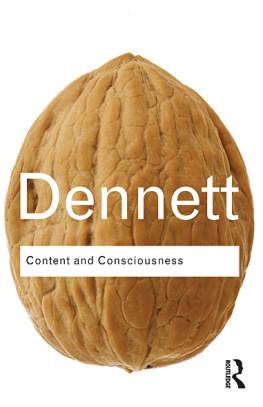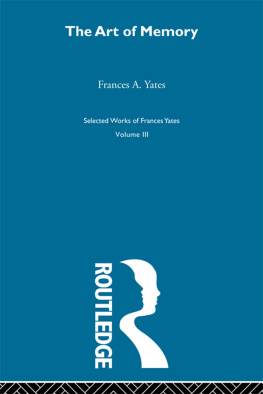Published by Routledge
2 Park Square, Milton Park, Abingdon, Oxon, 0X14 4RN
711 Third Avenue, New York, NY 10017
Published by the Institute of Strategic and International Studies (ISIS) Malaysia
ISIS Malaysia 1988
All rights reserved. No part of this publication may be reproduced, transmitted or stored in a retrieval system, in any form or by any means electronic, mechanical, photocopying, recording or otherwise.
This publication is intended to contribute to public information and discussion and is not to be taken to constitute institutional endorsement or support in any way.
ISBN 967-947-054-7
ISBN 0-7103-0370-X (hbk)
Publisher's Note
The publisher has gone to great lengths to ensure the quality of this reprint but points out that some imperfections in the original may be apparent.
Preface
AS AN IDEA, it was not new. Creative minds Carlos Andreas Perez from Latin America and Julius Nyerere from Africahad come forth to say that it was time for the countries of the South to establish a body of men who would help chart the way forward for the world's developing countries. But with all good ideas, the point had to be reached when the right decision could be made and the effective steps taken.
When the Third World Foundation and the Malaysian Institute of Strategic and International Studies convened in Kuala Lumpur a meeting of 100 scholars and statesmen from 23 countries of the South in May 1986, called South-South II: Charting the Way Forward, some hoped but few thought that that point had been reached.
In his keynote address, the chairman of the conference, Prime Minister Dato Seri Dr Mahathir Mohamad of Malaysia, noted that The North is not our intractable enemy. There is little to be gained by an attitude of confrontation. We have to speak the truth. We have to say the obvious. Dr Mahathir thought that South-South II could present us with a historic opportunity. Then, in one short paragraph, he went on to suggest an Independent Commission on South-South Co-operation tasked with reporting on specific proposals for practical South-South co-operation.
The Kuala Lumpur meeting (May 5-8,1986) resolved to take up the challenge posed by the Prime Minister of Malaysia to convert hope into reality. The conference decided to establish a Steering Group to begin the process of consultation with leaders of the South. The degree of support was found to be firm and wide.
The Steering Group was also entrusted with the responsibility of searching for the Third World leader who could lead such a Commission. The task was not without its twists and turns.
At its meeting on Aug 9,1986, the Steering Group under the chairmanship of Dr Mahathir Mohamad and consisting of prominent leaders from the four corners of the Third World unanimously agreed that that leader would be Dr Julius Nyerere. It was also agreed that with President Nyerere's acceptance, the Chairman of the Steering Group should proceed to announce the establishment of the South Commission at the Eighth Summit of the Non-Aligned Nations to be held in Harare, Zimbabwe.
On Aug 31, 1986, immediately after the ceremonies celebrating Malaysia's National Day, Dr Mahathir boarded a small Malaysian executive jet which would reach Harare on the same night. After attending the official opening of the Eighth Non-Aligned Summit on the morning of September 1, the Prime Minister and representatives from the Steering Group took off for Dar-es-Salam. It was only in Dar that Dr Julius Nyerere agreed to assume leadership of the South Commission. Dr Mahathir had the pleasure of announcing the good news to the full plenary of the Non-Aligned in Harare the next day, to a good round of applause from all sides.
President Nyerere then set himself fully to the task of international consultation and assembling the men and women who would constitute the Commission, travelling initially through Latin America, South Asia, the ASEAN Community and China.
Convinced of a wide swath of support, he set out to organise a secretariat. With the key support of Premier Rajiv Gandhi, the services of Dr Manmohan Singh of India was secured as Secretary-General. In the end, 26 other prominent leaders were appointed to the Commission (each of course serving in their personal capacity).
The commissioners held their first meeting in Geneva on Oct 2-5, 1987. They hold their second meeting in Kuala Lumpur from March 1-4,1988. It is in honour of them and to commemorate the Second Meeting of the South Commission that this book was prepared. It is a collection of essays on the South by some of the leading advocates and thinkers on South issues. The essays are intended as food for thought in an area of intellectual discourse that is often as underdeveloped as are the nations which are the primary target and the primary subject. It is the hope of the editors that they will provide some intellectual nourishment to the prominent men and women of the South Commission as they embark on their own intellectual journey through a landscape that is often uncharted.
In the meeting between Prime Minister and President in Dar-es-Salam on the cool morning of Sept 2,1987, Julius Nyerere said there are those who are lucky in that the road which they have to travel is already made for them, while some others have to build the road on which they must travel. He thought that the South Commission belonged in the second category.
It is hoped that this book can contribute in a modest way to the building of the road which the South Commission will have to construct even as it journeys to its final destination.
* * *
It is noted that much groundwork has been laid by the Steering Group, the organisers of the South-South I in Beijing and the co-sponsors of South-South II in Kuala Lumpur. We are particularly grateful to Mr Altaf Gauhar (who along with Dr Noordin Sopiee was the Secretary of the Steering Group) for his efforts to help bring to fruition the idea of a Commission for the South.
For the publication of this book, we wish to express our thanks to the various publishersthe Third World Foundation; the Research Centre for Co-operation with Developing Countries, Ljubljana, Yugoslavia; the Ministry of Primary Industries, Malaysia; the Institute for Scientific Co-operation, Tubingen, West Germany; and UNCTAD for kindly allowing ISIS Malaysia to reprint their papers.
Our gratitude also goes to many more people, including ISIS researchers, members of the ISIS publications unit and the stenographers, for their support services in the production of this book.
Noordin Sopiee
B A Hamzah
Leong Choon Heng
February 14, 1988
Introduction: The global economic crisis the challenge to the South
NOORDIN SOPIEE
IN HISTORY, there are times of great continuity. And there are times of great discontinuity. It is clear that the world now stands on the threshold of a great discontinuity: an era of global economic crisis that will pose a challenge to the South such as it has not seen for a generation.
Many of the arguments of the doomsdayers who have now come forth can be dissected for intellectual amusement, or easily dismissed. And they have. But let us not forget the equally shallow case of the boomsday dreamers. To be sure, there indeed are times when, as President Roosevelt said, the only thing we have to fear is fear itself. Yet there are times when the only thing we have to fear is the lack of fear itself. There are times, fortunately not often, when what Raymond Aron said that optimism is a sure sign of an error in thinking is true. This is such a time.






